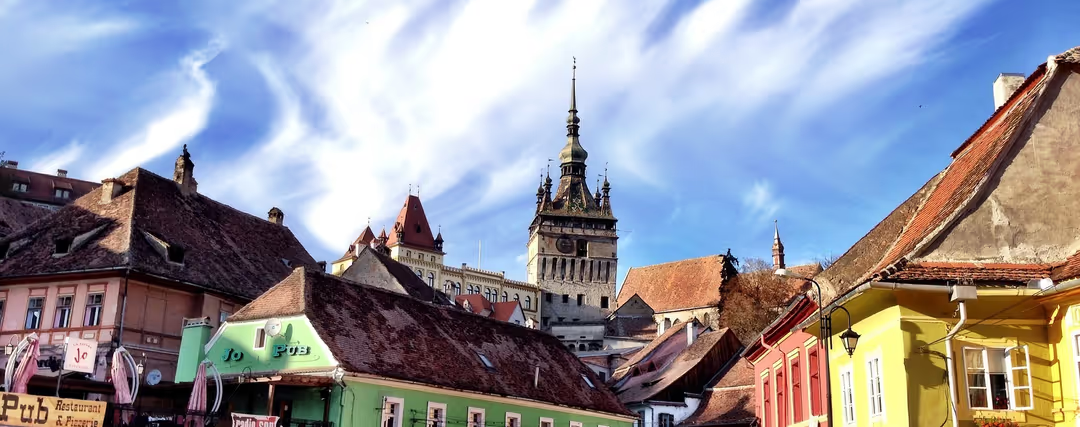

Are you planning your Erasmus in Romania? In this article, we tell you the most important facts to know about the country, from the best cities to study to the options required for international students, what to do during your stay in the country, different accommodation options and information about the best Romanian Universities.
Get ready to live your Erasmus in Romania, a country that has remained largely unknown to many, but that offers a cultural richness and hospitality that captivates those who immerse themselves in it.
Romania has several cities that are popular Erasmus destinations for international students, each with its unique characteristics. Bucharest, the capital, attracts students with its mix of historic and modern architecture, as well as its lively nightlife scene. Cluj-Napoca, known as "The Cultural Capital of Transylvania," is another prominent Erasmus city, with its cobblestone streets, festivals and active student atmosphere. For its part, Timişoara is noted for its revolutionary history and Baroque architecture, offering a blend of historic and contemporary charm. In addition, Iaşi, located in northeastern Romania, is an academic city with a rich cultural heritage and numerous parks, ideal for those who prefer a quieter environment.
The following are the most popular cities as an Erasmus destination in Romania:
Romania has a rich and complex history ranging from Roman times to the influence of the communist period. Exploring historical sites and monuments will allow you to immerse yourself in this fascinating history and learn about a different culture.
Compared to other European destinations, the cost of living in Romania is relatively low. This will allow you to enjoy your experience much more, being able to take advantage of all the activities, trips and meals you feel like.
Romanian cities, such as Bucharest and Cluj-Napoca, have a lively nightlife and offer a wide variety of cultural events, festivals and activities that you’ll be able to enjoy with your new friends.
From Romania, you can easily travel to nearby countries, such as Moldova, Slovakia, Hungary, Serbia and Bulgaria. In addition, it’s worth noting that from Bucharest several low-cost airlines operate, with which you’ll be able to explore Europe even more.
For history lovers, Romania offers many fascinating sites. You can't miss Bran Castle, which is often associated with the myth of Dracula, and Peles Castle, a spectacular royal palace in Sinaia. Explore the fortified towns of Sibiu and Sighișoara, which tell stories of medieval Transylvania through their cobblestone streets and well-preserved architecture. In addition, the National Museum of Romanian History in Bucharest provides a comprehensive overview of the country's history.
Attention adventurers, for whom exploring the Carpathian Mountains is the ideal plan. Go hiking on scenic trails, explore caves such as those in the Western Carpathians, or try skiing in the winter resorts. The Transylvania region also offers opportunities for cycling and enjoying rural landscapes.
For those who enjoy the vibrant pace of urban life, Bucharest, the capital, is a must-see. Discover the eclectic architecture in the old town, visit the Palace of Parliament (the second-largest administrative building in the world) and enjoy the ever-evolving arts and entertainment scene.
If you consider yourself a foodie, you have to know that Romania is a gastronomic paradise. Explore the local markets for fresh produce and try mămămăligă (porridge with maize flour) and sarmale (stuffed grape leaves). Romanian cuisine combines diverse cultures, offering a unique culinary experience.
Find the ideal accommodation in your desired location